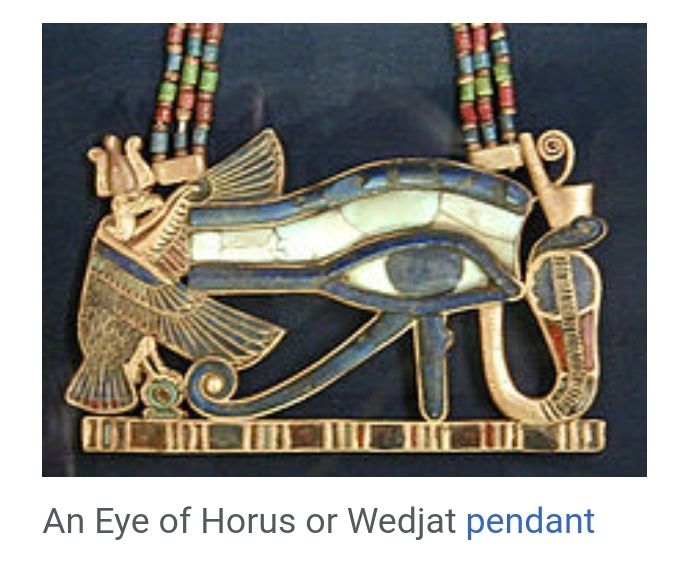The Eye Of Horus
Nov 28, 2020 • 13 views
The Egyptian Eye

The Eye of Horus, also known as wadjet, wedjat or udjat, is an ancient Egyptian symbol of protection, royal power, and good health.
The Eye of Horus is similar to the Eye of Ra, which belongs to a different god, Ra, but represents many of the same concepts.

Funerary amulets were often made in the shape of the Eye of Horus.
The symbol "was intended to protect the pharaoh [here] in the afterlife" and to ward off evil.
Ancient Egyptian and Middle-Eastern sailors would frequently paint the symbol on the bows of their vessels to ensure safe sea travel.

Horus was the ancient Egyptian sky god who was usually depicted as a falcon, most likely a lanner or peregrine falcon.
His right eye was associated with the sun god, Ra.
The eye symbol represents the marking around the eye of the falcon, including the "teardrop" marking sometimes found below the eye.
The mirror image, or left eye, sometimes represented the moon and the god Djehuti (Thoth).
It was believed by the Greeks and Romans that an evil heart could get to the eye.
The thought to be powerful effects of eyes and optics created the myth that the energy-producing power of the eye had the ability to cast evil spells with just a glance.
Because the ancients believed the evil eye could be counteracted with a 'good eye', myths about Horus arose.
In one myth, when Set and Horus were fighting for the throne after Osiris's death, Set gouged out Horus's left eye. The majority of the eye was restored by either Hathor [Mother of horus] or Thoth.
When Horus's eye was recovered, he offered it to his father, Osiris, in hopes of restoring his life.
Hence, the eye of Horus was often used to symbolise sacrifice, healing, restoration, and protection.
